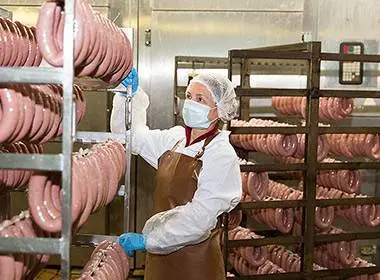
9월 . 28, 2024 15:31 Back to list
Efficient Sausage Production with Advanced Automatic Filling Technology for High-Quality Results
The Evolution of Automatic Sausage Fillers A Modern Solution for Meat Processing
The meat processing industry has undergone significant transformations over the years, driven by technological advancements and changing consumer demands. One of the most notable innovations in this field is the automatic sausage filler. This machine has revolutionized the way sausages are produced, making the process more efficient, consistent, and hygienic. In this article, we will explore the evolution of automatic sausage fillers, their benefits, and their impact on the meat processing industry.
Historical Context
Traditionally, sausage filling was a labor-intensive process that required skilled workers to manually stuff casings with meat mixtures. This method not only demanded considerable time and effort but also posed challenges in terms of consistency and hygiene. As the demand for sausages grew, especially in the post-World War II era, manufacturers sought ways to streamline the production process.
The introduction of mechanical sausage fillers in the late 19th century marked the beginning of a new era in sausage production. These early machines were hand-operated and could fill casings more efficiently than manual methods. However, they still required significant physical effort and the involvement of skilled labor.
With advancements in technology, the late 20th century saw the emergence of automatic sausage fillers. These sophisticated machines are designed to handle the entire sausage filling process with minimal human intervention. They are equipped with automated controls that ensure precise measurements and consistent filling, which is crucial for producing high-quality sausages.
Features and Benefits of Automatic Sausage Fillers
Modern automatic sausage fillers come with a variety of features that enhance the efficiency and effectiveness of the sausage production process
. Some key characteristics include1. Precision and Consistency Automatic fillers use advanced technology to measure the exact amount of meat mixture required for each sausage. This precision not only ensures uniformity in sausage size and weight but also enhances overall product quality.
automatic sausage filler

2. High Output Capacity These machines are capable of processing large volumes of meat in a fraction of the time it would take manual labor. This increased productivity allows manufacturers to meet the demands of a growing market without compromising on quality.
3. Hygiene and Safety Automatic sausage fillers are designed with hygiene in mind. They typically feature stainless steel construction, easy-to-clean surfaces, and seamless designs that minimize the risk of contamination. In an industry where food safety is paramount, these machines help maintain high hygiene standards.
4. Versatility Many automatic fillers are equipped with interchangeable attachments that allow for the production of various types of sausages—fresh, smoked, or cooked. This flexibility enables manufacturers to diversify their product offerings, catering to different customer preferences.
5. Labor Efficiency By automating the sausage filling process, manufacturers can reduce the need for manual labor, thereby lowering labor costs and reallocating employees to other critical areas of production. This can lead to higher overall efficiency within the production facility.
Impact on the Meat Processing Industry
The introduction of automatic sausage fillers has had a profound impact on the meat processing industry. As a result of increased efficiency and productivity, manufacturers can scale their operations, leading to higher profitability. Moreover, the ability to produce consistent, high-quality sausages has helped establish brand loyalty among consumers, driving sales and expanding market reach.
Additionally, the automation of the sausage production process has contributed to advancements in food safety practices. With stringent regulations governing food production, the use of automatic fillers aids compliance by ensuring cleanliness and reducing the risk of human error.
Conclusion
The automatic sausage filler represents a landmark advancement in the meat processing industry. By significantly enhancing efficiency, consistency, and hygiene, these machines have transformed the way sausages are produced, allowing manufacturers to meet the demands of an ever-evolving market. As technology continues to advance, it is likely that we will see further innovations in sausage production processes, ultimately benefiting both producers and consumers alike. As we reflect on the evolution of sausage manufacturing, it becomes clear that automatic fillers are not just machines; they are a critical component in the ongoing quest for quality, efficiency, and safety in food production.